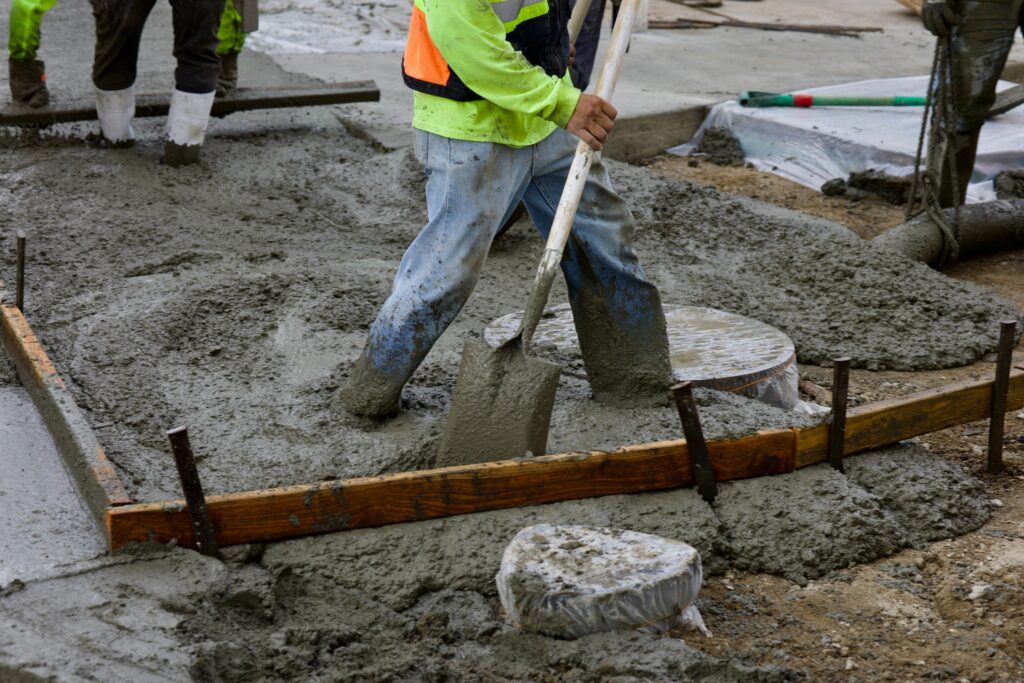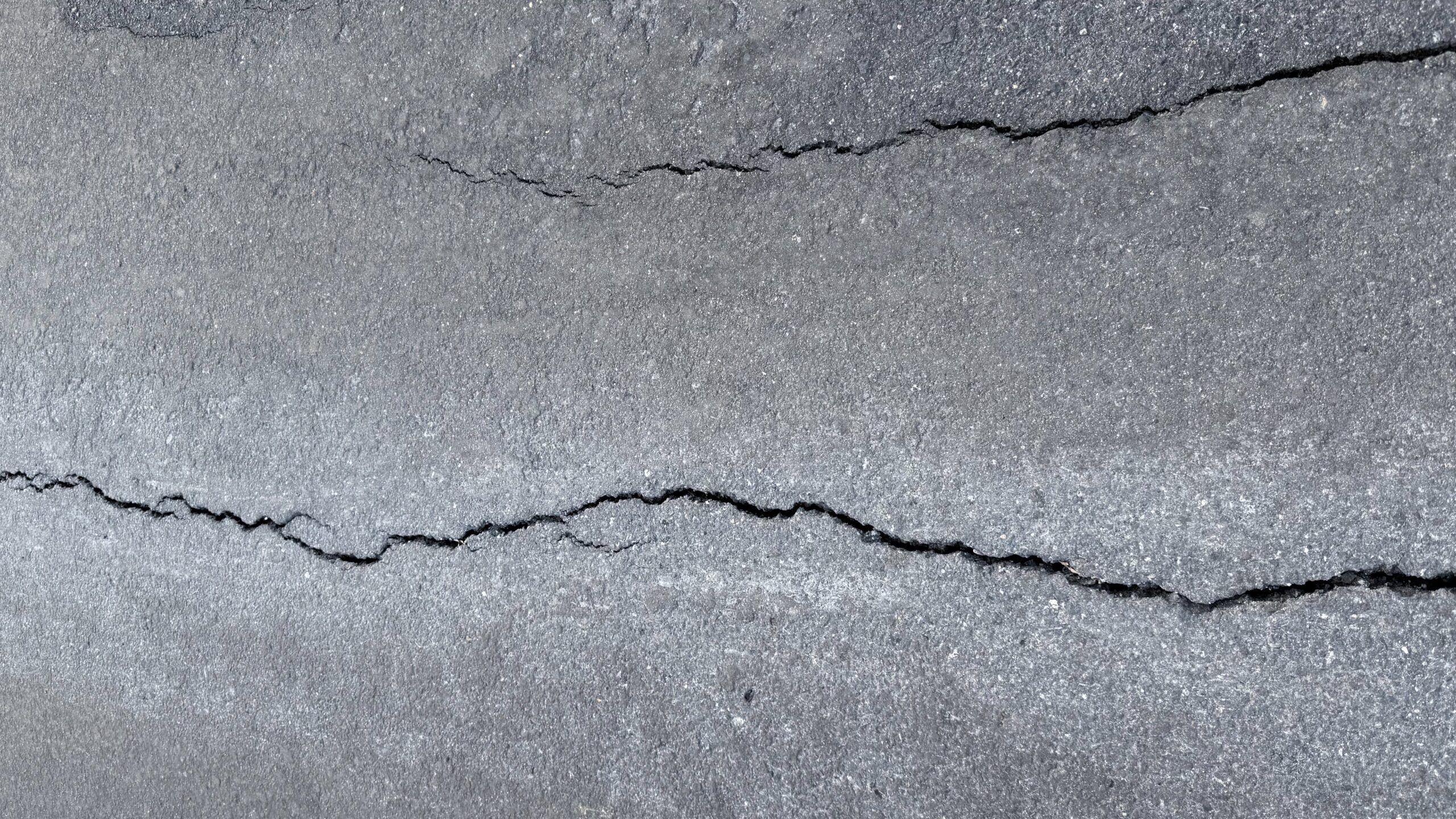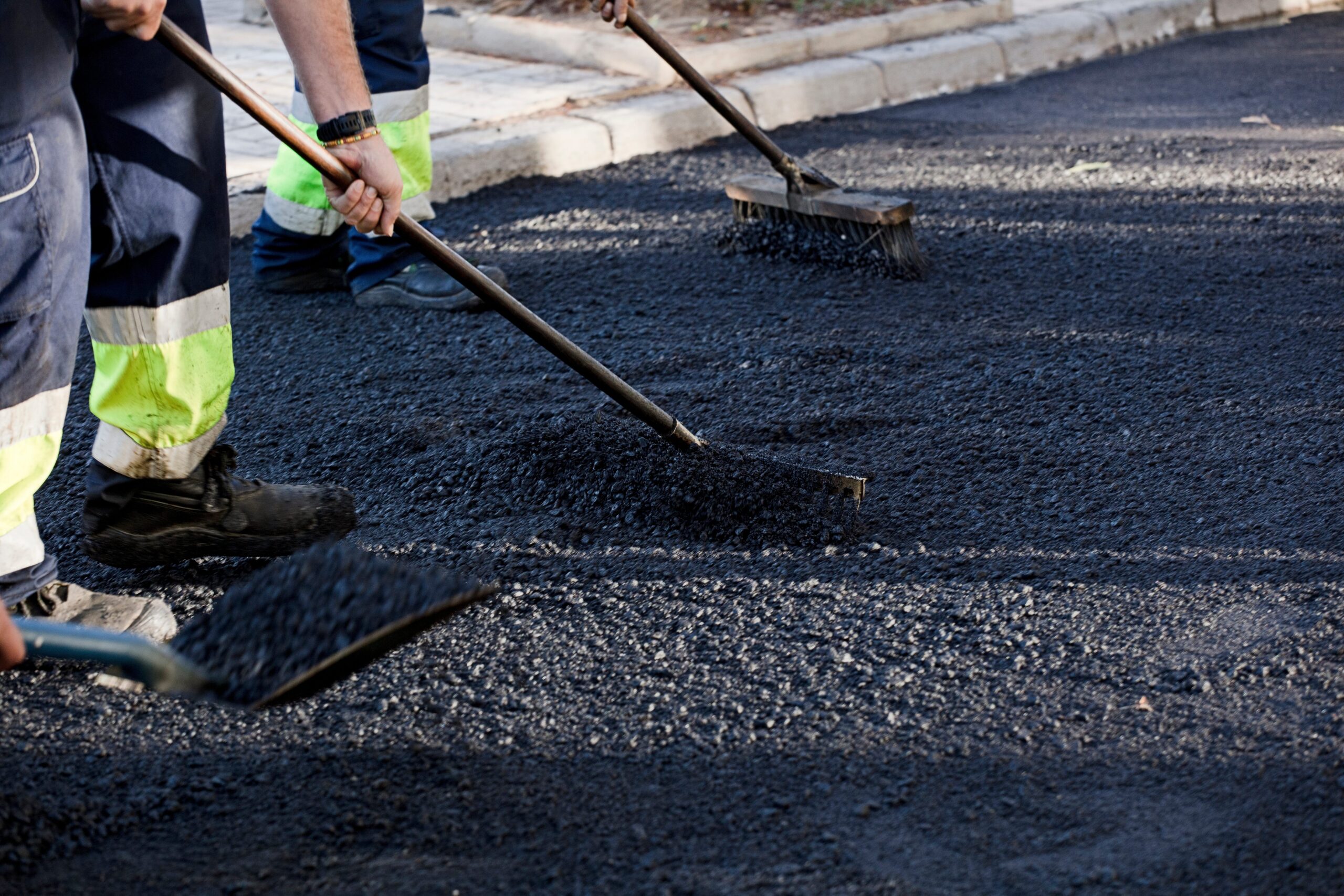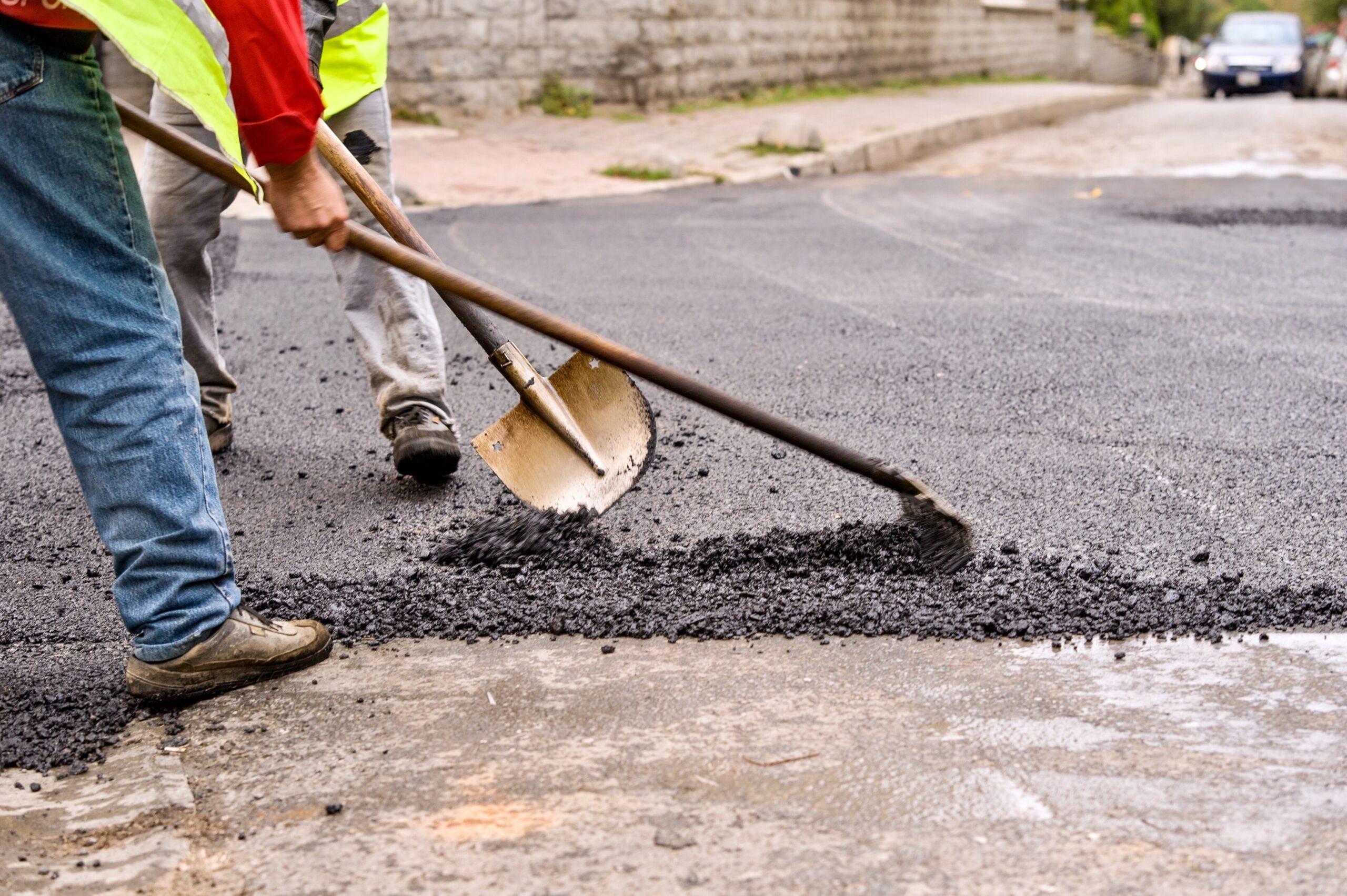
Choosing the right asphalt mix is essential for businesses and municipalities in Colorado Springs because the mountain climate creates unique challenges. Harsh winters, freeze-thaw cycles, and heavy precipitation can damage pavements, causing cracks, potholes, and faster wear.
The Federal Highway Administration reports that during thawing periods in freeze-thaw climates, the strength of pavement base layers can drop by as much as 67 percent, and subgrades by up to 56 percent, increasing strain and permanent deformation. Using an asphalt mix suited to these conditions helps pavements last longer, reduces maintenance costs, and keeps vehicles and pedestrians safe.
This blog examines the key factors in selecting asphalt mixes and practical strategies to make pavements more durable in Colorado Springs’ mountain climate.
How to Maintain Asphalt Pavements in Mountainous Regions
Proper preventive maintenance is critical for ensuring asphalt in Colorado Springs’ mountain climate. Harsh winters, high UV exposure, and heavy traffic accelerate surface deterioration, making routine inspections and early intervention essential.
Key maintenance strategies include
Before implementing these practices, it’s essential to understand how mountain conditions, like freeze-thaw cycles, high UV exposure, and drainage challenges, affect asphalt longevity in Colorado Springs.
- Annual inspections to identify early cracks, potholes, and rutting.
- Crack sealing to prevent water infiltration and freeze-thaw damage.
- Sealcoating to protect asphalt from oxidation, UV exposure, and chemical damage.
- Overlay applications to strengthen high-traffic areas without full reconstruction.
- Drainage monitoring to ensure water does not accumulate and compromise pavement integrity.
How often should preventive maintenance be performed in mountain climates?
Ideally, asphalt should be inspected at least twice a year, in spring and fall, with additional checks following heavy snow or rainfall. Preventive treatments like crack sealing or sealcoating should be applied as needed to maintain durability.
Maintenance alone isn’t sufficient; effective drainage solutions are essential to prevent accelerated damage.
Types of Asphalt Mixes Suitable for Mountain Conditions
Selecting the right asphalt mix is critical for mitigating environmental and operational stresses. Modern paving solutions offer various options to address freeze-thaw cycles, UV exposure, and heavy traffic.
Key asphalt mix types ideal for mountain climates include
Before finalizing the mix for a project, contractors and planners must evaluate site-specific conditions such as temperature range, slope, elevation, and expected traffic volume. This ensures the selected mix performs optimally throughout the pavement’s lifecycle.
- Polymer-Modified Asphalt (PMA): Enhanced with elastic polymers to improve flexibility, PMA reduces cracking and rutting in areas with extreme temperature swings.
- Warm-Mix Asphalt (WMA): Produced at lower temperatures, WMA minimizes emissions during production and provides better compaction in cold weather, making it suitable for mountain paving projects.
- Stone Matrix Asphalt (SMA): Designed for high-traffic roads, SMA combines stone-on-stone contact with a rich binder matrix to resist rutting and surface wear caused by heavy vehicles.
- Permeable Asphalt: Allows water to drain through the surface, preventing pooling and minimizing freeze-thaw damage in sloped or low-lying areas of mountains.
Which asphalt mix performs best in freeze-thaw conditions?
Polymer-modified asphalt (PMA) offers superior elasticity, preventing cracks from expanding during freeze-thaw cycles. Hot-Mix Asphalt (HMA) provides long-term durability in high-traffic areas, while Stone Matrix Asphalt (SMA) ensures structural stability under extreme stress.
Key Asphalt Mix Selection Tips for Long-Lasting Mountain Pavements
Selecting an asphalt mix goes beyond climate compatibility. Other critical factors include traffic volume, vehicle types, slope, drainage, and anticipated maintenance.
- Traffic volume and load: High-volume roads require HMA or SMA to prevent rutting and surface fatigue.
- Slope and drainage: Properly engineered asphalt layers prevent water accumulation and mitigate freeze-thaw damage.
- Maintenance requirements: Selecting mixes that require minimal upkeep reduces operational disruptions and long-term expenses.
- Environmental considerations: Sustainable or bio-based asphalt mixes reduce carbon emissions and energy consumption.
What are the most important considerations for asphalt selection?
Traffic load, climate extremes, slope, drainage, maintenance capabilities, and cost-effectiveness are all critical factors. Choosing a mix that balances durability and maintenance helps extend pavement life and reduce repair costs.
Selecting the right asphalt is only part of the equation; proper installation and maintenance are crucial for maximizing longevity.
Why Maintenance and Correct Installation Are Key to Asphalt Resilience
Even the most suitable asphalt mix can underperform without proper installation and maintenance. Correct compaction ensures air voids are minimized, preventing water infiltration that accelerates freeze-thaw damage. Layer thickness and surface grading are essential for structural integrity, especially under heavy commercial traffic.
Preventive maintenance strategies extend pavement life, reduce the frequency of major repairs, and maintain safety. These strategies include:
- Crack sealing: Seals minor fissures before water infiltration occurs.
- Sealcoating: Protects the surface from oxidation and UV damage.
- Overlaying: Strengthens structural capacity in high-stress areas.
- Drainage management: Prevents standing water and reduces freeze-thaw impacts.
How does proper installation affect asphalt performance in mountain climates?
Proper compaction minimizes voids, preventing water infiltration. Correct layer thickness ensures structural integrity under heavy loads, while adequate grading improves drainage and reduces water-related deterioration.
In addition to technical expertise, partnering with experienced contractors ensures long-term performance.
How Professional Asphalt Contractors Ensure Long-Term Pavement Success

Contractor expertise significantly impacts the success of asphalt projects in mountain climates. Experienced professionals select appropriate mixes, apply correct installation techniques, and provide guidance on preventive maintenance.
Benefits of professional contractor partnerships
Partnering with skilled asphalt contractors ensures that every project, from material selection to installation and maintenance, is executed with precision, efficiency, and long-term durability in mind.
- Expertise in climate-specific asphalt selection.
- Proper installation techniques ensure structural longevity.
- Compliance with local codes and quality standards.
- Guidance on preventive maintenance strategies.
Why is contractor experience critical for mountain asphalt projects?
Experienced contractors ensure that mixes are suitable for freeze-thaw conditions, installations are correctly executed, and preventive maintenance plans are properly implemented, extending pavement lifespan and reducing costs.
How the Right Asphalt Mix Improves Longevity and Reduces Maintenance Costs
Investing in high-quality asphalt designed for mountain climates reduces long-term repair costs. Durable mixes withstand freeze-thaw stress, UV exposure, and heavy traffic, minimizing resurfacing frequency.
Financial advantages include
Investing in the right asphalt mix and maintenance plan helps reduce lifecycle costs, minimize repair frequency, and extend pavement longevity for better long-term returns.
- Longer pavement life with fewer major repairs.
- Lower operational and maintenance expenses.
- Reduced risk of safety hazards and liability.
- Potential energy savings with WMA or bio-based mixes.
Does investing in a high-quality asphalt mix save money long-term?
Yes, durable mixes minimize repair frequency, extend pavement lifespan, and reduce total maintenance costs, providing significant long-term savings despite higher upfront costs.
With the right selection, installation, and maintenance, Colorado Springs businesses can enjoy safe, long-lasting asphalt surfaces while reducing operational and financial risks.
Improving Asphalt Performance Through Advanced Drainage Systems
Water is one of the most destructive forces for asphalt, especially in freeze-thaw-prone mountain regions. Standing water accelerates cracking, potholes, and structural weakening. Proper drainage design ensures that water is directed away from pavement surfaces and sublayers.
Drainage improvement measures include
Effective drainage systems prevent water accumulation, reduce freeze-thaw damage, and enhance the overall performance of asphalt surfaces in mountainous climates.
- Installing sloped surfaces to direct runoff away from the asphalt.
- Incorporating permeable asphalt in low-lying areas to enhance water absorption.
- Maintaining storm drains to prevent blockages and water accumulation.
- Using subsurface drainage layers in high-traffic zones to reduce water infiltration.
How does proper drainage extend pavement life?
Effective drainage removes standing water, reducing freeze-thaw stress and preventing pothole formation. It also preserves structural integrity, minimizing costly repairs and enhancing safety for vehicles and pedestrians.
Combining preventive maintenance and drainage solutions forms the foundation for long-term pavement sustainability.
Strategies for Long-Term Pavement Durability and Sustainability
Sustainable pavement planning involves selecting the right mix, scheduling timely maintenance, and implementing effective drainage solutions. Businesses that plan for long-term pavement health reduce lifecycle costs while ensuring a safe, functional environment.
Key components of long-term planning include
Developing a strategic pavement management plan ensures consistent performance, cost efficiency, and sustainability over time.
- Using climate-appropriate asphalt mixes with polymer modifications or bio-based binders.
- Implementing a scheduled maintenance program including inspections, crack sealing, and overlays.
- Incorporating sustainable drainage practices to prevent water-related deterioration.
- Planning for expected traffic loads and adjusting mix designs accordingly.
What is the most important factor in long-term pavement sustainability?
The combination of selecting the right asphalt mix, implementing preventive maintenance, and managing drainage effectively ensures that pavements withstand harsh mountain conditions and heavy traffic over time.
Partnering with experienced asphalt contractors ensures these sustainability strategies are properly executed.
Why Hiring Expert Asphalt Contractors Ensures Long-Term Quality
Expert contractor partnerships ensure correct asphalt mix selection, proper installation, and ongoing maintenance. Contractors familiar with Colorado Springs’ mountain climate can advise on polymer-modified asphalt, Stone Matrix Asphalt (SMA), and other suitable options.
Benefits of professional contractor partnerships
Collaborating with certified asphalt professionals ensures precision in mix selection, installation, and long-term surface resilience.
- Proper selection of climate-appropriate asphalt mixes.
- Correct compaction, grading, and layer installation.
- Scheduled preventive maintenance for maximum lifespan.
- Compliance with local codes and safety standards.
The right contractors help maximize the financial and operational benefits of early investment in quality asphalt.
Cost-Benefit Analysis of Choosing the Right Asphalt Mix
Investing in high-quality asphalt designed for mountain climates reduces long-term repair costs, prevents operational disruptions, and enhances safety. While upfront costs may be higher, the overall lifecycle cost savings justify the investment.
Financial advantages include
A well-planned asphalt strategy helps minimize future costs, avoid premature failures, and protect overall property value.
- Reduced frequency of major repairs.
- Lower ongoing maintenance expenses.
- Minimized safety risks and liability exposure.
- Potential savings through longer pavement life and durability under extreme weather.
Does investing in high-quality asphalt save money long-term?
Yes, selecting the right mix minimizes repairs, extends pavement life, and reduces total maintenance costs, offering substantial long-term financial benefits.
Combining the right mix, preventive maintenance, drainage solutions, and expert contractors ensures a safe, durable, and cost-effective asphalt surface for businesses.
Secure Your Investment with the Perfect Asphalt Mix for Mountain Conditions
Choosing the right asphalt mix for Colorado Springs’ mountain climate is a strategic investment. Understanding environmental stresses, selecting climate-appropriate mixes, implementing preventive maintenance, ensuring proper drainage, and partnering with experienced contractors through Asphalt Coatings Company together extend pavement lifespan, reduce long-term costs, and enhance safety.
Businesses that take a proactive approach to asphalt selection and maintenance protect both infrastructure and operations, ensuring smooth, durable surfaces year-round. For professional guidance, schedule a consultation with Asphalt Coatings Company to select the best asphalt mix tailored to Colorado Springs’ challenging mountain climate.
Protect your business and investment with durable, climate-ready asphalt. Contact Asphalt Coatings Company today to schedule an inspection and consultation.
Frequently Asked Questions
What type of asphalt mix works best in freeze-thaw climates?
Polymer-modified asphalt (PMA) is generally considered ideal for climates with frequent freeze-thaw cycles because its enhanced elasticity allows it to better accommodate expansion and contraction without cracking. Traditional hot-mix asphalt (HMA) may be used in high-traffic zones, but only when designed with proper binder selection and mixture balance to resist moisture infiltration.
How much does climate influence asphalt mix selection?
Climate is a critical factor in asphalt mix design. Temperature extremes, precipitation, and freeze-thaw cycles dictate the binder grade, aggregate structure, and additives used in the mix. A mix suitable for a mild climate can fail rapidly in a mountain environment unless tailored for those stresses.
Can lower-temperature asphalt mixes (like warm-mix) perform well in cold regions?
Yes. Warm-Mix Asphalt (WMA) technologies allow mixing and compaction at lower temperatures, reducing energy consumption and emissions. Some WMA formulations have shown good performance in colder conditions, provided the design and additives account for low-temperature stiffness and durability. T
What role does proper installation play in the longevity of asphalt pavements?
Even the best-engineered asphalt mix will underperform if improperly installed. Correct compaction, lift thickness, grading, and moisture control are essential. Poor installation allows voids and water infiltration, which amplify freeze-thaw damage, oxidation, and structural failure over time.
Why should property owners invest in climate-appropriate asphalt rather than just choosing the cheapest mix?
Economics over time favors climate-appropriate mixes. While upfront cost may be higher, these mixes lead to fewer repairs, less frequent resurfacing, and reduced downtime. In harsh mountain environments, mismatched mixes often fail early, leading to significantly higher lifecycle costs.



